In Jordan - the valley of Wadi Rum

i promised to post part two of the adventure we undertook last weekend... the previous post focused on petra... this post features wadi rum...
it is impossible to describe the vastness and majesty of the desert scattered about with these massive, wind and water-weathered sandstone monoliths... the emptiness, the silence, the sky, the clouds, the sun and the stars are very much in the foreground of consciousness in wadi rum rather than a barely noticeable part of the background...
we spent the evening out in the desert, watching the sunset and then returned to a desert camp where we were treated to bedouin food and music before retiring to our tent for a night's sleep... at 5:45 the next morning, we dressed and mounted camels for a short trek out into the desert to watch the sun rise... the experience was both indescribable and unforgettable...
some photos to tease your imagination...
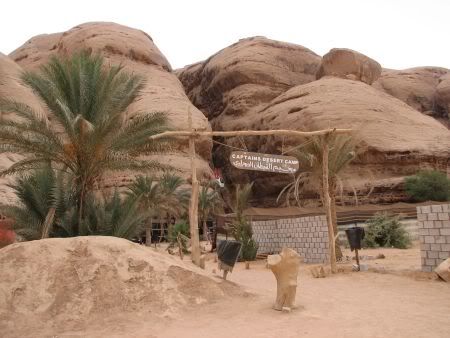
Our host for the night -
The Captain's Desert Camp
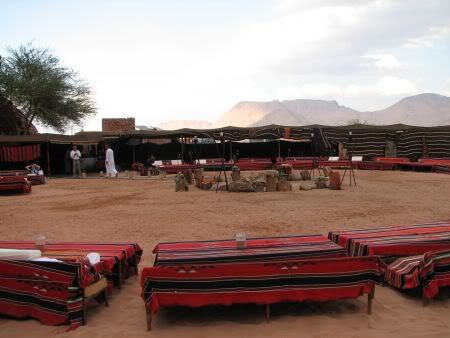
The community gathering-place at the camp
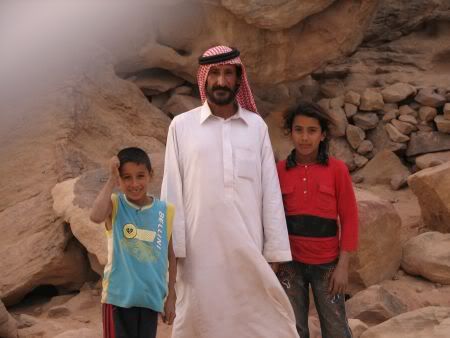
A Bedouin father and his children
(his youngest daughter is hiding behind him)
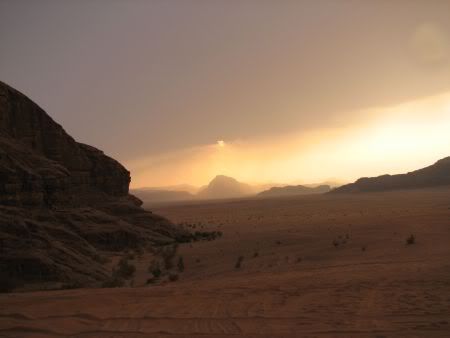
Sunset on the desert at Wadi Rum
24 October 2008
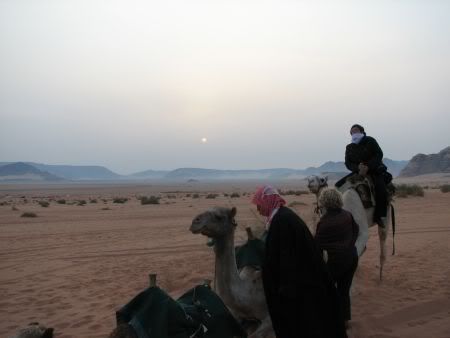
Sunrise on the desert at Wadi Rum
25 October 2008
Wadi Rum
Wadi Rum (Arabic: وادي رم) is a valley cut into the sandstone and granite rock in southwest Jordan. It is the largest wadi in Jordan. The name Rum most likely comes from an Aramaic root meaning 'high' or 'elevated'. To reflect its proper Arabic pronunciation, archaeologists transcribe it as Wadi Ramm.
Wadi Rum has been inhabited by many human cultures since prehistoric times, with many cultures — including the Nabateans — leaving their mark in the form of rock paintings, graffiti, and temples. As of 2007, several Bedouin tribes inhabit Rum and the surrounding area.
In the West, Wadi Rum may be best known for its connection with British officer T. E. Lawrence, who based his operations here during the Arab Revolt of 1917–18. In the 1980s one of the impressive rock formations in Wadi Rum was named "The Seven Pillars of Wisdom" in memory of Lawrence's book penned in the aftermath of the war, though the 'Seven Pillars' referred to in the book actually have no connection with Rum (see the Foreword in the book).
[...]
The area centred on Wadi Rum (the main valley) is home to the Zalabia Bedouin who, working with climbers and trekkes, have made a success of developing eco-adventure tourism, now their main source of income. The area around Disi to the NE, home to the Zuweida Bedouin and erroneously also thought to be part of Wadi Rum by visitors, caters more for Jordanian visitors from Amman, with campsites regularly used by party-goers.
The area is now also one of Jordan's important tourist destinations, and attracts an increasing number of foreign tourists, particularly trekkers and climbers, but also for camel and horse safari or simply 'day-trippers' from Aqaba or Petra. In contrast, there are almost no local or Arab tourists though nearby Disi (not actually part of Rum) attracts young people from Amman at weekends. Popular activities in the desert environment include camping under the stars, riding Arab horses, hiking and rock-climbing amongst the massive rock formations.
Labels: Bedouin, desert, Jordan, Wadi Rum
Submit To PropellerTweet














